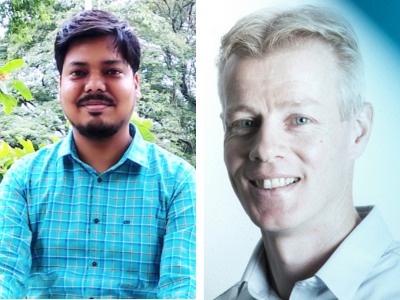Passion Leads Engineers to Publish New Research concerning auditory factors around Transmission Product Development & UAM
Posted: June 21, 2023
Hundreds of engineers and industry professionals gathered in Grand Rapids, Michigan to discuss the latest research in NVH and sound quality.
With the push to sustainability and convenience, conversations focused on reducing the noise around EVs and UAVs.
SAE International spoke with two authors who have some answers. Meet Roalt Aalmoes, Senior R&D engineer at Royal NLR, an author of The Influence of Contextual Non-Auditory Factors on Drone Sound Perception and Sarthak Rastogi, System Modeling Engineer at Eaton India Innovation Centre, an author of A Reduced Order Model for Prediction of the Noise Radiated by a High-Speed EV Transmission using Statistical Energy Analysis.
 SAE International (SAE): Tell us a bit about your paper. What are some key takeaways for your audience?
SAE International (SAE): Tell us a bit about your paper. What are some key takeaways for your audience?
Sarthak Rastogi (SR): This paper primarily focuses on the methodology known as statistical energy analysis (SEA). SEA is basically a methodology used to predict the noise and the vibration that is radiated from any typical structural system. The problem that I have tried to solve here is how to predict the gear whine noise that radiated from the transmission…for different conditions like speed and torque level, and the noise that is radiated from the transmission I have leveraged this SEA methodology.
Roalt Aalmoes (RA): Non-auditory factors [are] the main issue that we wanted to address. We evaluated drone noise within a more silent, rural environment and then we compared it with an urban environment, where you have more noise typically. But we also found auditory factors that had some influence: Smaller drones have a more high-pitched tonality, so some people compared it with bugs or insects, and larger models have lower frequency sounds. While we saw these differences, it's also quite personal, so that's something that we want to explore further in upcoming studies.
SAE: What made you want to explore this area in a tech paper?
SR: One of the pain areas of using conventional methodologies such as FEM/BEM is larger computational time which becomes time consuming part of transmission product development cycle. In addition, as the trend is shifting towards more electric vehicles where transmission speeds are higher & hence makes the analysis process more cumbersome. Hence there was a need to come with a methodology which can take minimal computational time and propose some design changes to mitigate transmission noise in cost effective manner which was done using Statistical Energy Analysis (SEA).
RA: Our main topic research topics are on noise and perception, and that's also what this paper is about. What we try to do is look at the new kind of air vehicles that are becoming more common nowadays—in particularly, drones. This is a new concept called Urban Air Mobility is what we look at in this study.
SAE: What did the path to publishing look like for you?
SR: First, I did some extensive literature survey, and tried to find out the current state of SEA, and the potential gaps that we can fulfill using this research. What are the gaps? What are the pain areas that we try to understand? Then, talking about the mathematical background, I had gone through online lectures and textbooks to see how the back end basically works. What are the governing equations that are being involved in this statistical energy analysis? I had closely worked with my colleague Kevin Marsh. He is primarily responsible for carrying out all the testing for the transmissions. I had worked closely with him, and he had supported a lot the test data which we leveraged for this verification study.
RA: We knew how the study would look, but we didn't know exactly the results, so that was ongoing. We used the same kind of setup for the paper that we would also use with other research papers. So you describe the methodology or, actually, first the literature study, then you describe the methodology. You then describe the experiment you want to do, and then the results and finally, the discussion and the conclusion. We have a structured paper and for all the elements we used, all expertise comes from the three co-authors of the paper.
SAE: Why did you choose to share your work through SAE?
SR: It may sound cliche, but SAE is a very reputable organization. I have previously been a part of some of the competitions organized by them…that was one of the rich memories that, even now, I carry.
RA: Publishing something with SAE is a good way to come in contact with other experts in your field.
SAE: What advice do you have for new professionals who may also be interested in writing a technical paper but are unsure where to begin?
SR: Follow your passion and love the work that you do, [and] then you won't feel burden at all.
RA: You have to believe a little bit in yourself and have a certain desire to dive into a topic. Don't be afraid to fail because that's the way we learn. Write things up and if you want to publish it, it can be a very good way to start learning. Of course, everybody makes mistakes, but you will learn from experts in the fields.
Explore the latest research in NVH through SAE's Mobilus Technical Resource Platform.
Stay updated on the latest updates in Noise and Vibration, including SAE’s 2023 NVH Conference
Portions of this interview were edited for brevity and clarity.

